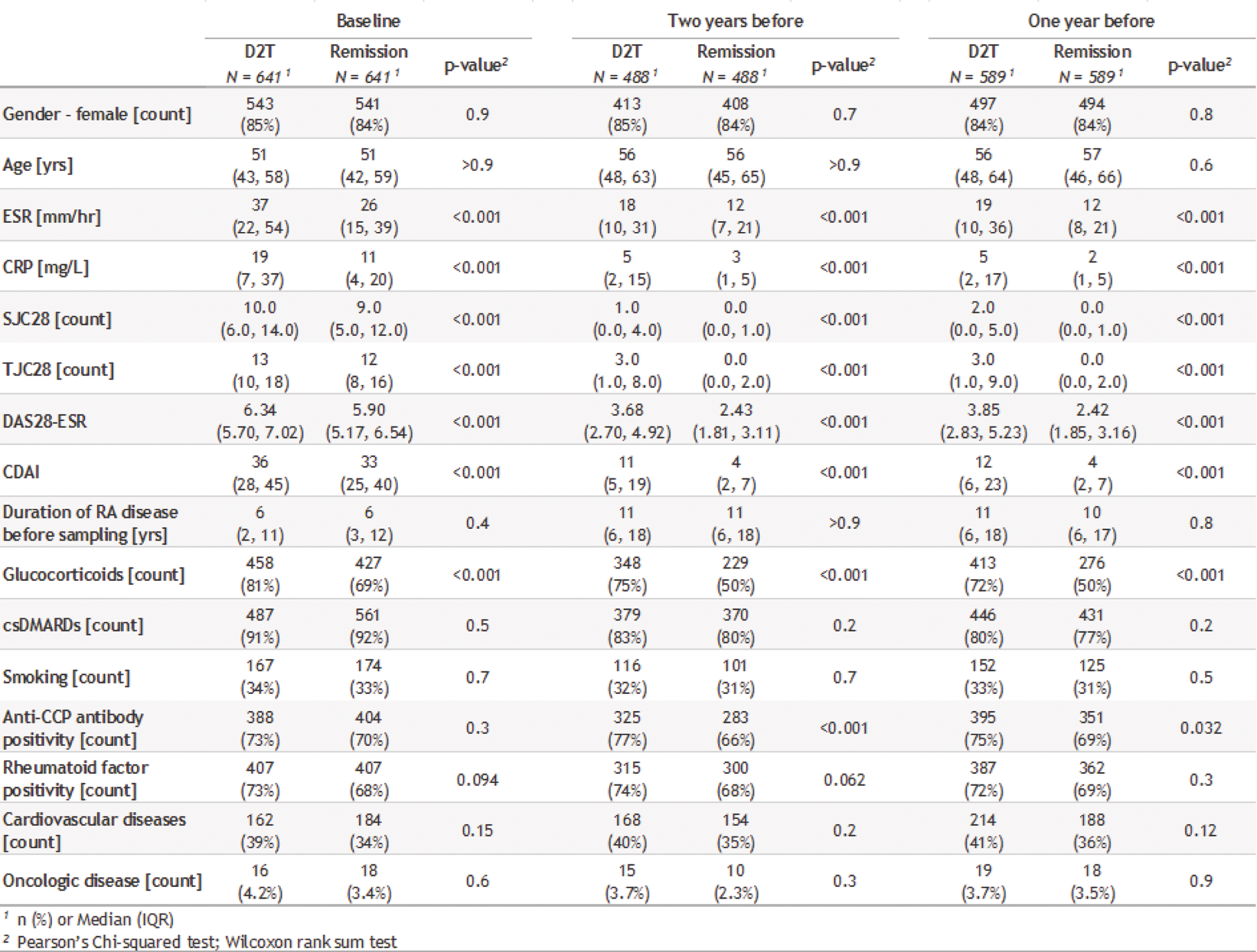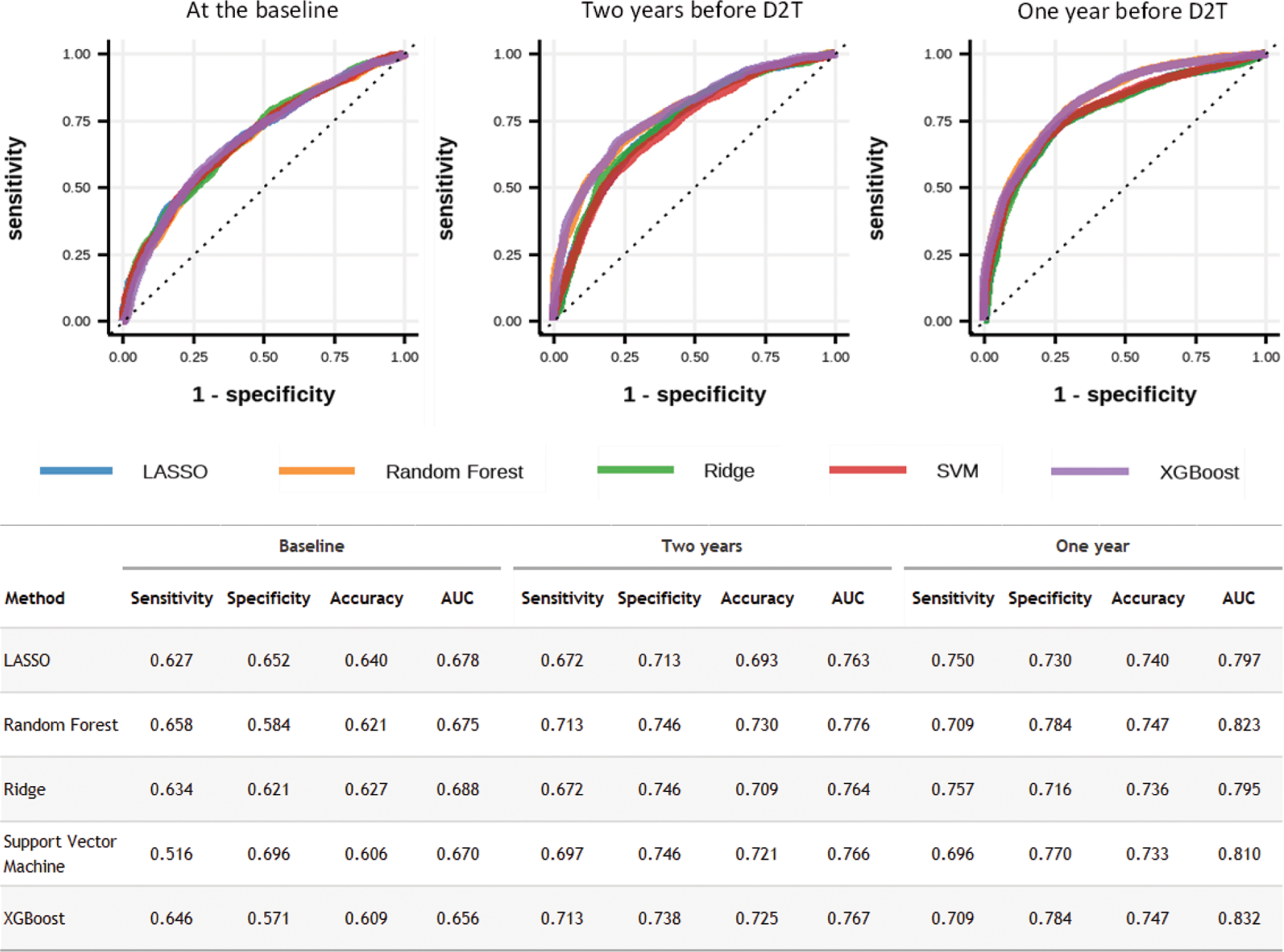

Background: Difficult-to-treat (D2T) rheumatoid arthritis (RA) significantly impacts patient outcomes despite the availability of advanced biologic (b-) and targeted synthetic (ts-) DMARDs.
Objectives: This study aimed to identify clinical predictors of D2T-RA at baseline and one or two years before its meeting the definition of D2T using machine learning techniques.
Methods: We retrospectively analyzed data from 8,543 RA patients treated with b/tsDMARDs, recorded in the Czech Republic’s ATTRA registry (2002–2023). Patients defined as D2T-RA based on EULAR criteria were matched with those in sustained clinical remission (Simple Disease Activity Index < 3.3 and Swollen Joint Counts ≤ 1) for age, gender, disease duration, and biological treatment duration. All patients initiated b/tsDMARDs treatment, and their characteristics are listed in Table 1. Machine learning models—lasso, ridge, support vector machines, random forest, and XGBoost—were employed, with Shapley additive explanation (SHAP) values used for feature interpretation.
Results: A total of 641 D2T RA patients (mean age: 50.6 years; 84% female) were matched with RA patients in clinically sustained remission. Machine learning models achieved AUCs between 0.606–0.747 and 0.656–0.832 across prediction time points (Figure 1). SHAP analysis highlighted clinical disease activity measures, CRP, and b/tsDMARD treatment duration as key predictors. The best prediction performance occurred one year before meeting the definition of D2T RA.
Conclusion: This study identifies key predictors enabling earlier recognition of D2T-RA, enhancing targeted treatment strategies. These findings underscore the potential of machine learning tools in improving RA management. Future efforts should focus on validating and refining these predictive models for broader clinical applications.
REFERENCES: NIL.


Acknowledgements: NIL. SVV 260 523, MHCR NU23-10-00434, MHCR 023728.
Disclosure of Interests: None declared.
© The Authors 2025. This abstract is an open access article published in Annals of Rheumatic Diseases under the CC BY-NC-ND license (